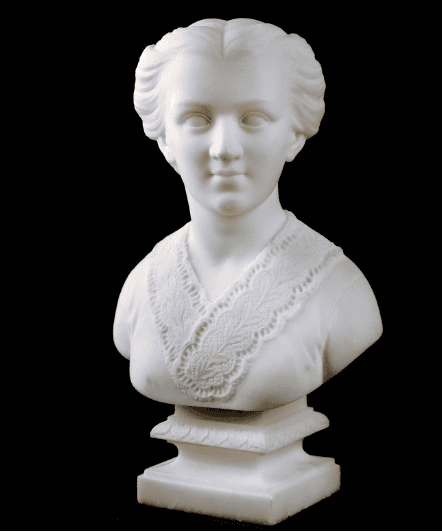This article originally appeared at Curationist.
Most of the artists named in Curationist’s partner collections are men, part of a broader exclusion of women from art history. Feminist, queer, and anti-colonial movements have challenged this underrepresentation. In this seven-part series, Curationist highlights women artists from our partner museum collections.
Introducing Curationist’s Series on Women Artists
Humans of all genders have made art for millennia. Yet women artists are largely underrepresented in the collections of large museums, including Curationist’s partner archives. This is especially true for women without wealth, social status, or other privileges. In particular, Global North institutions have continuously overlooked art by women of color and those from the Global South.
Worldwide feminist, queer, and anti-colonial movements have pushed back against this underrepresentation. Through activism, artmaking, and scholarship, these movements have sought to recenter women’s and gender-diverse people’s histories, and support their artistic expressions.
Drawing on this rich body of scholarship, this essay introduces Curationist’s seven-part series on women artists in our partner collections. The series is meant to be an entry point into learning more about women artists and their work.
The series examines women’s creative expressions through the diverse contexts in which they worked—from convents to imperial workshops, anti-colonial movements to the contemporary art market. In doing so, Curationist hopes to highlight common themes and unexpected connections between women creators across time and place.
Considering the limitations of any archive compared to the vastness of human history, it’s impossible to build a comprehensive catalog of women’s creative expressions. Instead, by spotlighting women’s creative work and making connections across eras, geographies, materials, gender systems, and methods of production, we can complicate dominant categories, elevate undertold histories, and inspire further learning.
Gender and the Museum

Locating women’s art in museum archives can be challenging. To identify and interpret art made by women, we have to consider the institutional underrepresentation of women, the division between “art” and “craft,” and the culturally specific nature of gender categories.
Lack of Representation
Many artists represented in the collections of Curationist’s partner museums are unnamed, and their genders unknown. Those artists who are named are majority white men. A 2018 study of 18 large art museums in the United States, including several of Curationist’s partner institutions, found that 87% of represented artists are men and 85% are white.1 As a result, browsing the digitized collections for works known to be made by a woman can often feel like looking for a needle in a haystack.
Category of Gender
At a practical level, Curationist’s search tool does not allow users to filter by artist’s gender. Only one of our museum partners (as of January 2024), the Statens Museum for Kunst, offers this function on their website. This kind of search category may seem like a simple solution to the difficulty of finding works of art by women. Yet generalizing a gender filter across diverse collections raises additional problems, namely the issue of defining gender.

Gender is a cultural category specific to time and place.2 A particular culture’s gender system can be binary or nonbinary. Even when gender systems have some equivalent of the English words “man” and “woman,” the cultural roles and expectations attached to those categories are diverse.3 Further, in many parts of the Americas, Africa, Asia, and Oceania, European colonization often marginalized women-centered social practices, and the social roles of nonbinary genders, in favor of patriarchal binaries.4 So filtering artworks by the modern, English-language categories of “man” and “woman” might inappropriately impose Euro-American understandings of gender on contexts where they do not apply. A binary search tool might also leave out important cultural categories, such as third gender categories.5
When searching for and interpreting works through the lens of gender, it’s important to consider the artist’s historical and cultural context. In this series, we’ll use the English word “woman” as a placeholder for a variety of historical gender identities tied to bodies and social roles that a particular culture considered feminine. Without first-person testimony, we can only guess how a specific historical person understood their own gender. Thus, not all of the artists we include in this series would necessarily have identified as women.
The Division Between “Art” and “Craft”
Institutional distinctions between objects labeled “art” and “craft” can marginalize women artists. Definitions of what counts as art are historically specific. The category of art as it’s understood in most Euro-American museums is a modern European invention.6 The objects art historians include in this category have changed over time. These shifting definitions reflect social power, including institutional sexism and racism.7

Similarly, institutions often devoted less research to objects they labeled “craft.” In many historical contexts, women have been more likely than men to labor in the home. They have created functional and beautiful objects for household use, often working collaboratively in mediums like textiles and ceramics, traditionally categorized as craft. However, many of these objects were not preserved, often due to scarce resources, the perishable nature of their materials, or lack of institutional interest. Museums’ valuation of art over craft thus tended to marginalize women creators.8
Because of these considerations, feminist art historians, starting largely from the 1960s, have paid renewed attention to objects made in the context of domestic labor as a way to center unnamed women’s work.9 Art historians have also searched through existing archives to reexamine women artists whose names might be documented but whose work is understudied.10
Feminist Approaches to Art History
Feminist art historians have developed a number of inventive strategies to identify art made by women and gender-diverse people in museum archives, and to interpret that art.
When researching objects whose creators are unnamed, art historians can use context to help fill in the gap. Information about the gendered division of labor in a particular society can point toward women’s authorship of specific objects. Written historical texts, oral histories, and the practices of contemporary descendent communities can all provide information about a society’s gender system and the roles women played in artistic creation at a given time and place. This context can help us read the museum archive for women’s histories which have been unrecorded or erased.
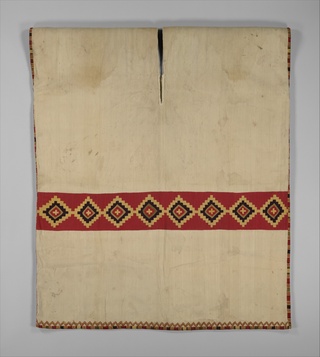
For example, in its digital object record, the Metropolitan Museum of Art does not include (and may not have) specific information on who created the ornate Incan textile pictured here. Spanish colonial officials violently suppressed Incan people and culture, erasing records of the past.11 However, historical texts describing Incan imperial weaving workshops, as well as the oral histories of contemporary Andean people, suggest that women played a major role in creating prestige textiles.
We can’t say for sure that a woman made this particular tunic. But the tunic’s historical context provides a starting point for further inquiry. Next steps in learning about this object and the world it came from could include, for example, an internet search for indigenous Andean people’s historical writing, in order to learn about gender in the Incan empire.
Reader’s Guide to the Women Artists series
Because art is a historically specific category, not all of the creators highlighted in this series would have considered themselves artists or their work art in the modern, English-language sense. They may have primarily considered themselves ritual specialists, craftspeople, healers, or in other roles. For example, the nuns featured in “Women Artists and the Divine” may have considered their works primarily sacred objects rather than aesthetic creations. Because of this diversity, in this series, we’ll use the words art and artist as placeholder terms for a variety of objects and creators.
When browsing the archives, it’s important to remember that each object ended up in a museum through a series of historical processes. Collectors acquired most of these objects—with varying degrees of consent and force—from their original contexts. Various collectors, dealers, and curators bought and sold the objects over years, often transferring them from their regions of origin to the Global North. Provenance records, listed alongside the object record, can provide hints of an object’s journey. Yet museums often don’t have or haven’t shared full information about an object’s travels from its point of origin to the museum. And even complete provenance records leave out important social and cultural context, including information about gender.
Through both collaboration and confrontation, various groups such as museumgoers, scholars, collectors, activists, artists, and communities of origin make new meanings with and about these objects. We can listen to what these objects, and those who love and care for them, tell us about the past. By studying these works, we can make connections between women, feminine, and gender diverse people across time and place—and put their creativity back at the center of art history.
The following presents a brief overview of the next six features in our series focused on women artists in Curationist’s partner collections. Each of these summaries includes a link to the corresponding feature.
Women Artists and the Divine
Whether through archaeology or oral history, global peoples have sought to identify the origins of human creative expression. People have often ascribed special creative powers to women, feminine people, and people who give birth. Across cultures, female deities are often associated with the arts, particularly textile production and ceramics. Their artistic expression parallels the power of people with wombs to craft human life.12
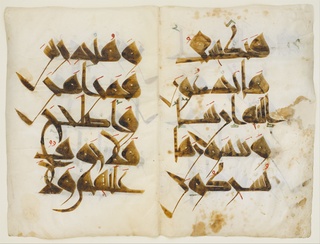
Learn more about women artists and divinity.
Court Artists and State Production Systems
Across time and place, rulers have patronized the arts as a means of glorifying themselves. State-sponsored production systems reinforced ideologies of social cohesion and hierarchy.13 Imperial rulers frequently supported lavish workshops where artists produced objects for the state treasury, diplomacy, religious functions, or the personal enjoyment of elites.

Learn more about women artists in royal courts and state production systems.
Sovereignty, Kinship, and Care
Across time and place, women have created beautiful, useful, and ritually powerful objects that reinforce networks of kinship and care. In some societies, women hold customary rights to specific motifs, techniques, or compositions, which might signify cultural, political, or spiritual power.14 Sharing art across generations can help women ensure continued group identity, including in conditions of enslavement, genocide, and displacement.
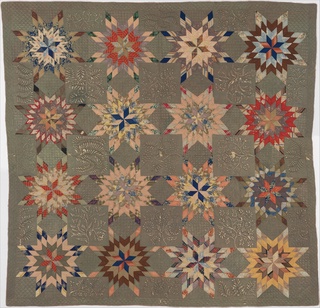
The associated feature focuses on the work of Native American, Black American, and indentured South Asian diasporic women and their descendents. Drawing from their distinct historical experiences, these women expressed enduring community sovereignty, sustained creative practices, and developed new, syncretic artforms.
Learn about how women transmit cultural values through art. (to be published in April 2024)
Enlightenment and Extraction
In the early modern period, scholars in Europe enacted a broad shift in scientific and philosophical inquiry, often referred to as the Enlightenment. Merchant and other urban classes used profits from the colonial system, including from transatlantic slavery, to purchase art outside traditional church and royal patronage.15 European and Euro-American women artists increasingly pushed past male gatekeepers to gain recognition in these emerging markets.16

By studying European and Euro-American women’s works within this global context, we can trace the development of art markets as part of emerging world systems. And we can acknowledge these artists’ underrecognized talent while critiquing their complicity in colonialisms that harmed people worldwide.
Learn more about the connections between women’s art and European colonialism. (to be published in April 2024)
Modernity and Modernism
The 19th and early 20th centuries witnessed seismic shifts in global power. Colonization and decolonization, the growth of capitalist markets, and the rise of new technologies aided the rapid spread of global aesthetic movements. Women artists from diverse contexts fought to participate in public artmaking.
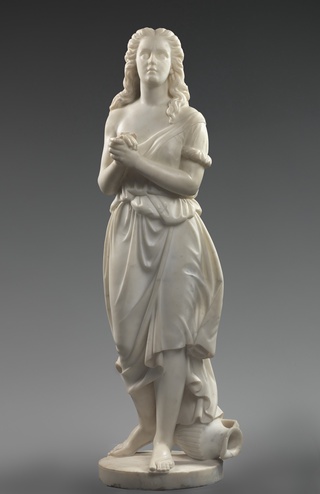
This feature highlights the foundational, if often underrecognized, work of women in forging the aesthetics of global modernist movements. It focuses on the works of Katsushika Oi, Edmonia Lewis, and María Izquierdo.
Learn more about women in global modernisms. (to be published in May 2024)
20th Century Movements to the Contemporary Moment
In the late 20th century, women created an outpouring of art in solidarity with anti-colonial, feminist, and Indigenous self-determination movements. Many women artists played a vital role in creating postcolonial artistic movements that forged national cultural identities. Indigenous women artists revived and innovated on creative forms of significance to their communities. They navigated and transformed the capitalist art markets in which they sold their work.

This feature focuses on women artists working in settler colonial or postcolonial contexts, much of whose work engages with themes of land and indigeneity, often through the lens of women’s bodily experience. It includes Lygia Pape in Brazil, Kamala Ibrahim Ishag in Sudan, contemporary Pueblo women potters such as Margaret Tafoya, and women from the Aboriginal art movement including Kathleen Petyarre.
Learn more about contemporary women artists. (to be published in May 2024)
